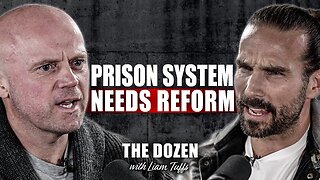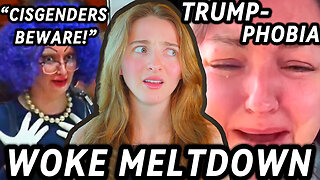Premium Only Content

The Wall Street Crash and the Great Depression: A Devastating Downturn
The Wall Street Crash of 1929, also known as Black Tuesday, marked the beginning of one of the most devastating economic downturns in modern history—the Great Depression. The crash occurred on October 29, 1929, when the stock market experienced a sudden and severe decline, leading to a cascade of economic hardships that reverberated around the globe.
The Roaring Twenties in the United States were a time of unprecedented prosperity. Technological advancements, a post-war boom, and easy credit fueled a surge in consumer spending and investment. The stock market soared, with the Dow Jones Industrial Average tripling in value between 1924 and 1929. People from all walks of life were investing their hard-earned money in stocks in the hope of making a fortune.
However, underneath the surface, there were fundamental issues. This era of optimism was fueled by speculation and fueled by risky lending practices. Many investors bought stocks on margin, meaning they only put down a small percentage of the purchase price and borrowed the rest. This created a fragile house of cards, vulnerable to any shock to the system.
On October 24, 1929, the first cracks appeared and a wave of panic selling sent stock prices tumbling. By Black Tuesday, October 29th, the Dow Jones had plunged 12%, wiping out billions of dollars in wealth. The crash triggered a domino effect, as investors desperate to recoup their losses dumped their stocks en masse, further driving down prices. The crash not only devastated individual investors but also had a profound impact on banks, businesses, and the overall economy.
The immediate aftermath of the Wall Street Crash was a collapse of consumer confidence and a sharp contraction of economic activity. Unemployment skyrocketed as businesses struggled to stay afloat and were forced to lay off workers. The ripple effects of the crash extended beyond the financial sector, affecting industries such as manufacturing, agriculture, and international trade.
The crash marked the beginning of a decade-long period of economic decline known as the Great Depression. Unemployment reached a staggering 25% by 1933. Millions of Americans lost their homes, their jobs, and their hope. Those fortunate enough to remain employed often faced wage cuts and reduced hours. Breadlines became a grim reality, and social unrest simmered as desperation mounted.
Shantytowns, known as "Hoovervilles," emerged in various cities, highlighting the desperate living conditions of those who had fallen on hard times. The arts reflected the somber mood of the times, with literature, music, and visual arts often expressing the struggles and hardships of the era.
One of the defining features of the Great Depression was the severe contraction of global trade. Protectionist measures, such as tariffs like the Smoot-Hawley Tariff Act were introduced in the United States.
Governments, initially unsure of how to respond, grappled with the unprecedented challenges posed by the economic crisis. In the United States, President Franklin D. Roosevelt implemented the New Deal, a series of programs and reforms aimed at stabilizing the economy and providing relief to those affected by the Depression. The New Deal included measures such as the creation of public works projects, financial regulations, and social welfare programs.
The Great Depression led to the creation of social safety nets, like unemployment insurance and Social Security, and ushered in a new era of regulations.
Today, as we navigate the complexities of our own economic landscape, understanding this defining chapter in history remains as relevant as ever.
-
 1:17:59
1:17:59
Sarah Westall
9 hours agoDOGE: Crime & Hysteria bringing the Critics & the Fearful - Plus new CDC/Ukraine Crime w/ Dr Fleming
46.6K3 -
 45:39
45:39
Survive History
15 hours ago $8.39 earnedCould You Survive in the Shield Wall at the Battle of Hastings?
58.3K6 -
 1:50:28
1:50:28
TheDozenPodcast
14 hours agoViolence, Abuse, Jail, Reform: Michael Maisey
96.7K4 -
 23:01
23:01
Mrgunsngear
1 day ago $5.62 earnedWolfpack Armory AW15 MK5 AR-15 Review 🇺🇸
83.1K12 -
 25:59
25:59
TampaAerialMedia
1 day ago $3.46 earnedUpdate ANNA MARIA ISLAND 2025
52.5K4 -
 59:31
59:31
Squaring The Circle, A Randall Carlson Podcast
16 hours ago#039: How Politics & War, Art & Science Shape Our World; A Cultural Commentary From Randall Carlson
40.2K3 -
 13:21
13:21
Misha Petrov
16 hours agoThe CRINGIEST Thing I Have Ever Seen…
32.4K58 -
 11:45
11:45
BIG NEM
12 hours agoWe Blind Taste Tested the Best Jollof in Toronto 🇳🇬🇬🇭
23K1 -
 15:40
15:40
Fit'n Fire
15 hours ago $0.50 earnedArsenal SLR106f & LiteRaider AK Handguard from 1791 Industries
19.9K1 -
 8:34
8:34
Mike Rowe
6 days agoWhat You Didn't Hear At Pete's Confirmation Hearing | The Way I Heard It with Mike Rowe
56.4K23